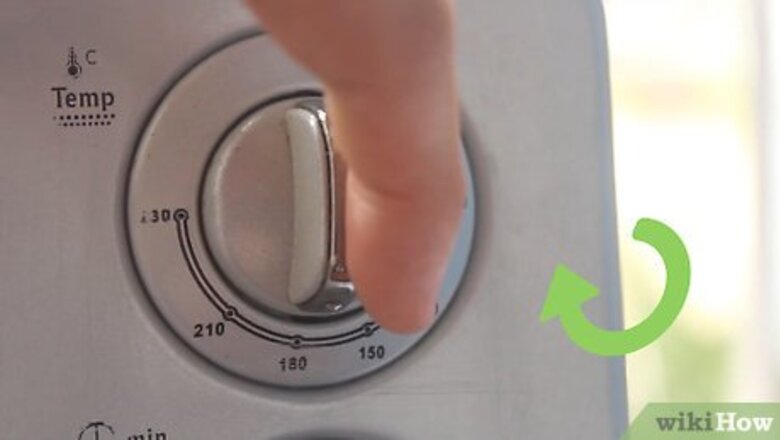
views
Season a New Cast Iron Skillet

Preheat the oven to 450 ºF (177 ºC). Don't plan on cooking anything else in the oven while you season the cast iron, since the process can be affected by steam created by cooking other food.

Wash and dry the skillet. Use soap and a scrub brush to completely scour it. This is the only time you'll be using these items to clean your skillet; after it's seasoned, you no longer scour it.

Coat the skillet in and out with lard, vegetable shortening, or olive oil. Make sure it is completely coated, and rub it in with a paper towel.
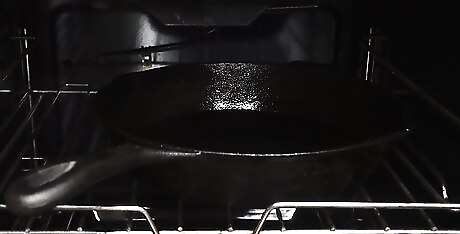
Place the skillet in the oven for 30 minutes. Let the fat or oil bake into its surface for 30 minutes. Remove the skillet from the oven and allow it to cool.
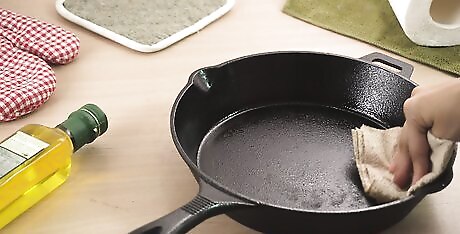
Repeat this process 2 or 3 more times. It takes more than one coating of oil to completely season cast iron cookware. To make sure you have a good nonstick surface that won't strip off when you cook food, give it another coat of fat or oil, cook it, let it cool, and repeat the process once or twice more.
Rescue a Rusty Cast Iron Skillet
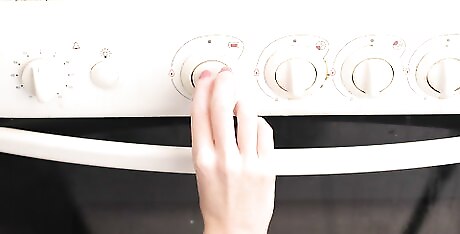
Preheat the oven to 450 degrees Fahrenheit. Avoid cooking anything else in the oven while you season the skillet.
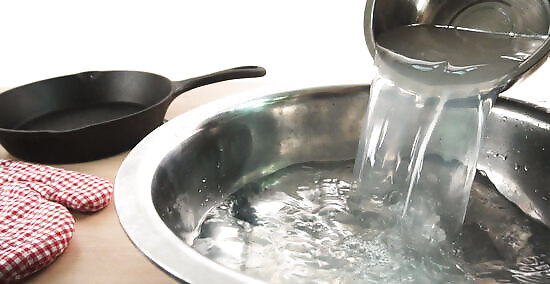
Make a solution of white vinegar and water. Find a large container big enough to submerge the entire skillet. Fill the container with a mixture of half white vinegar, half water.

Place the skillet in the vinegar solution. Make sure it is completely submerged. Allow it to soak for three hours. The vinegar will dissolve the rust. Remove the skillet after it's finished soaking. If you still see rust on the skillet, use a scrub brush to scrub it off. It should come off easily at this point. Make sure no rust remains. Don't put the skillet back in the vinegar solution to soak. If you let it sit in vinegar for too long the cast iron will start to degrade.
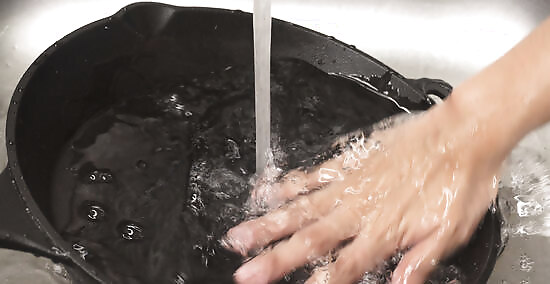
Rinse the skillet in water and wipe it dry. Make sure it is completely dry by heating it up over the stove or in the oven for a few minutes.
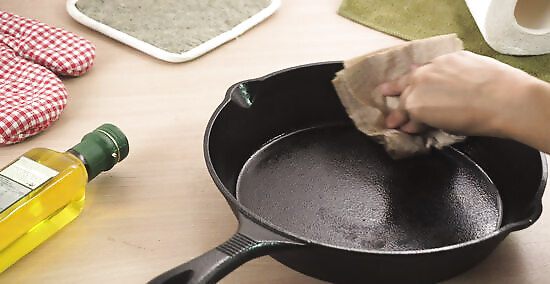
Coat the skillet in a layer of fat or oil. Make sure it is completely covered. Use a paper towel to rub the fat or oil into the skillet's surface.

Bake the skillet in the oven for 30 minutes. Season the skillet at a temperature of 450 ºF (177 ºC) for 30 minutes. Remove the skillet from the oven and allow it to cool.
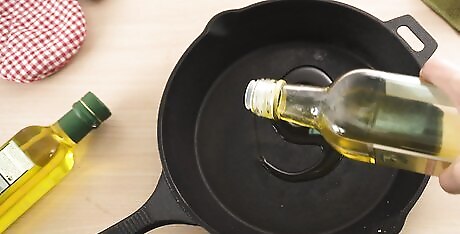
Repeat the seasoning process 2 or 3 more times. To make sure you build a good nonstick coating, coat the skillet with oil, bake it, allow it to cool, and repeat the process again. If necessary, you can follow the seasoning process a total of 3 or 4 times.
Maintain a Cast Iron Skillet
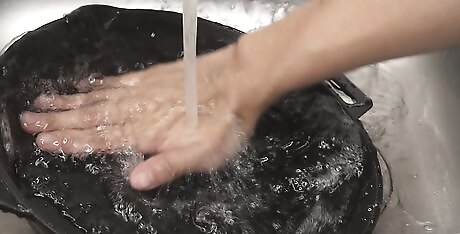
Clean it right away. Cast iron is easiest to clean right after cooking, before the food has a chance to become one with the skillet. As soon as it is cool enough to touch, wipe out the food remnants with a towel and rinse it with hot water. If there's a layer of caked-on food at the bottom of the pan, use a mixture of kosher salt and vinegar to scrub it off with a paper towel. Afterward, rinse the skillet with hot water to make sure you wash off all traces of the vinegar. Caked-on food can also be burned off. Place your skillet in an oven turned to very high heat. The food will turn to ash, which can be brushed off once the skillet has cooled down. If you use this method you'll have to re-season the skillet, since the seasoning will get burned off, too. Don't use soap or a wire scrub brush on seasoned cast iron. It will scrape off the seasoning, removing the nonstick surface allowing moisture to react with the metal and create rust.
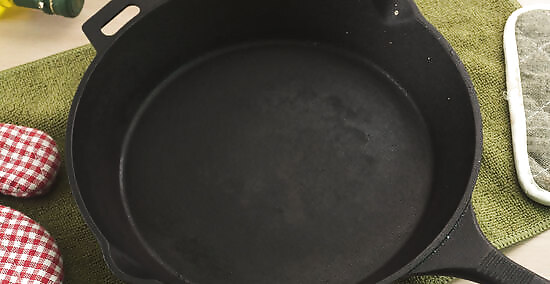
Make sure the skillet gets completely dry. After you rinse out the food, dry the skillet completely. Use a dry dishcloth to wipe it off, taking care not to miss any crevices and make sure the back gets dried off, too. You can place the pan upside down over the burner that you used to cook on, if the burner is still a little warm. This will help the pan dry faster. To make extra sure the pan is dry, heat it up in the oven for a few minutes.
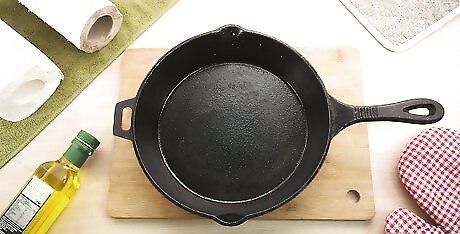
Re-season the pan periodically. Every time you cook with a cast iron skillet, the oil you use infuses with the pan and helps keep it seasoned. However, you can help the process along and make sure your skillet stays completely nonstick by using the full seasoning process from time to time, especially if you had to use vinegar and salt to clean it.
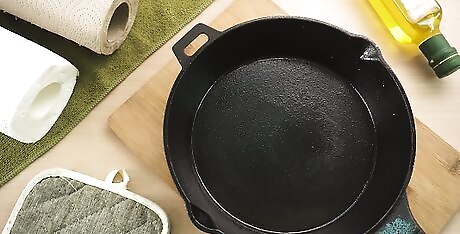
Store the skillet in a dry place. Make sure water from other kitchen supplies doesn't drip onto the pan. If you're storing it with other cookware, line it with a dry dishcloth or paper towel to protect the surface of the cast iron.




















Comments
0 comment